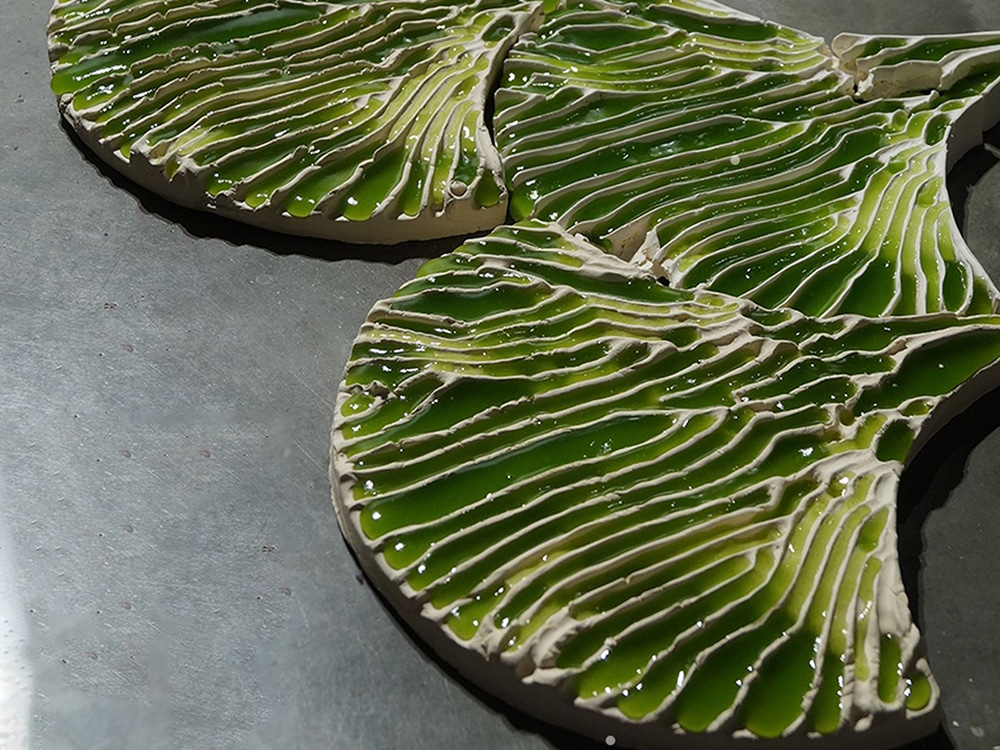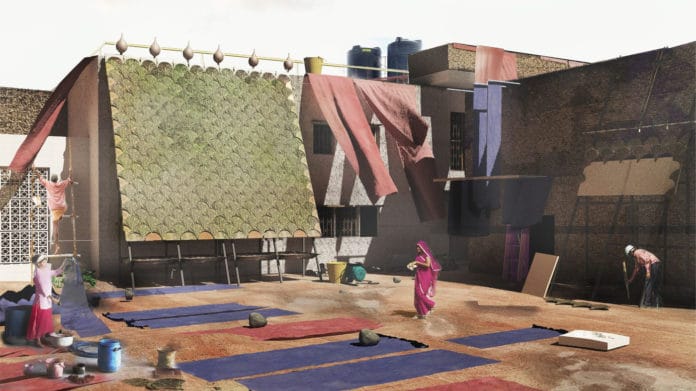A team of designers and engineers from University College London (UCL) are trying to make wall tiles that work as a real living organism.
Some data shows that more than 80% of India’s surface water is polluted, and industrial water is among the main sources of pollution. This problem is particularly prevalent in small rural areas as there is not enough developed infrastructure to solve this problem.
To tackle this problem, a team of designers and biochemical engineers led by Dr. Brenda Parker, Professor Marcos Cruz, and Shneel Malik, from UCL created ‘Indus,’ a tile-based, modular bioreactor wall system that can filter toxic chemical dyes and heavy metals out of water. The tiles made of ceramic can be mounted on the walls of factories or other buildings, and the water tank at the top of the building would direct water through vein-shaped channels.

The project is based on a scientific process called bioremediation, which has been used since 1940 to purify highly contaminated sites in which biological organisms. In this case, algae help to destroy contaminants and purify the water in a sustainable way.
The research team tested this invention of algae-wall in India, where they found that a species of algae has the ability to reduce cadmium concentration ten times within 45 minutes.
The tiles are manufactured in Khurja, India, the city of ceramics in the country. One tile costs between five and seven dollars per square foot, depending on the technique used in production, although the team predicts that their price will drop when they are mass-produced.
Researchers hope that Indus tiles in the later stages of the research will be able to adapt to different countries and continents, and will be made of different materials such as sand, stone and even raw sewage.
